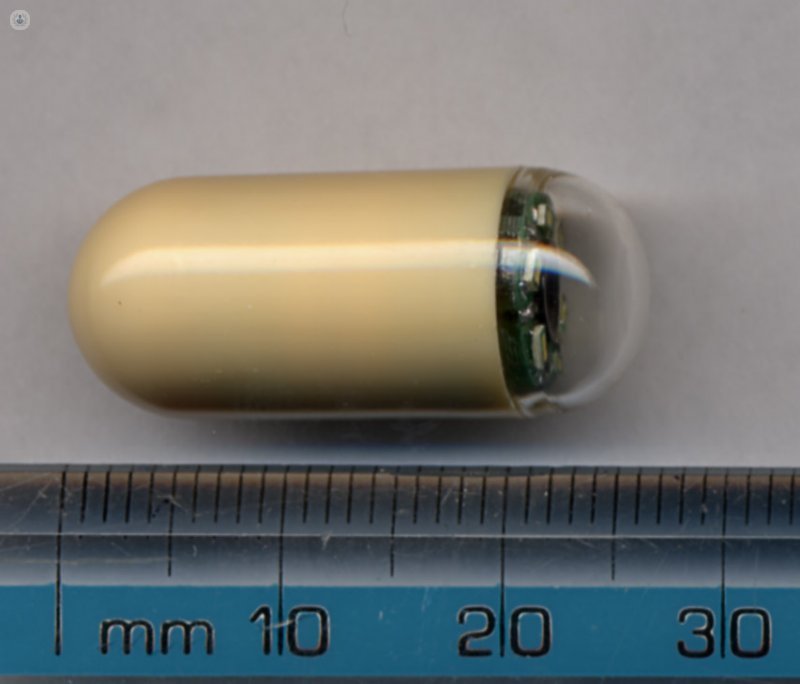capsule endoscopy to explore the small intestine
Written by: Capsule endoscopy is a device composed of one or two chambers, thanks to its small size (such as a tablet), it is introduced orally and allows viewing and recording the physiological path through the small intestine.
Capsule endoscopy is a device composed of one or two chambers, thanks to its small size (such as a tablet), it is introduced orally and allows viewing and recording the physiological path through the small intestine.
Detects conditions that capsule endoscopy
Endoscopic capsule can locate various diseases, some of which can not be diagnosed with other techniques. The most common are:
- Ulcer: it is an open sore or raw area that can form in the lining of the stomach or intestine and can have serious consequences, such as bleeding, peritonitis, fistulas, or even loss of nutrients.
- Angioectasia: also called arteriovenous malformations, anomalies are formed in blood vessels of the small intestinal wall. This condition is more common as a person ages and is also linked with other medical problems such as chronic renal failure or heart valve disease. Only by capsule endoscopy can detect this anomaly.
- Polyp: a protrusion formed in the intestinal mucosa. Like the angioectasia, you can only be diagnosed by capsule endoscopy.
Advantages of capsule endoscopy
Capsule endoscopy has numerous advantages over other diagnostic techniques in the Digestive System , as conventional endoscopy:
- It does not require sedation
- You can be displayed perfectly the structure of the small intestine
- Image can be played at different speeds
- You can see completely the entire small intestine
- Displays the villi (surface absorption) of the intestine
- It lets see better bowel injuries
This technique applies primarily to those patients in whom traditional endoscopic technique is contraindicated or where they want to access areas of the intestine that otherwise would not be possible.
It should be noted that, in most cases, is not a replacement of the traditional technique, but complementary.
Complications of capsule endoscopy
No significant complications. Only if there stenosis in the intestinal tract, the capsule may remain impacted, so endoscopic or surgical removal will be necessary. However, before administration, always makes sure to other radiological techniques nonexistence of strictures.
How capsule endoscopy works
First, as in the case of endoscopy, capsule endoscopy requires a pre-protocol by the patient, which is simply a fast of at least eight hours, in order that the images taken are as clarifying possible and, therefore, the technique ensures a more reliable diagnosis. In case you want to view the colon, laxatives and requires 24 hours before liquid diet.
The registration process images through this device is about five hours to the small intestine and about eight to view the colon. Thus, since the patient swallows the capsule, it will broadcast video images to the external device the patient, where they remain recorded. After 8-10 hours, the images are downloaded to visualize. A few hours after ingestion of the capsule, the patient can start taking food.


